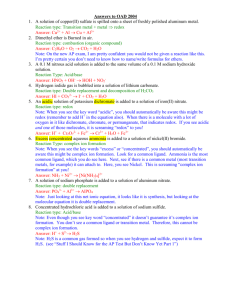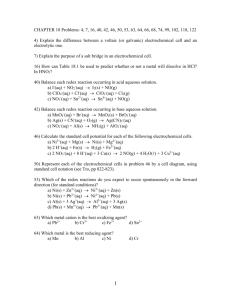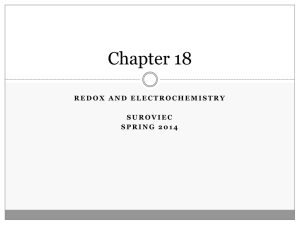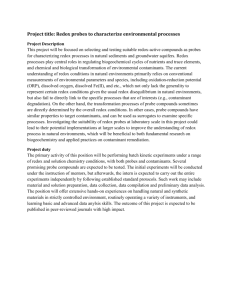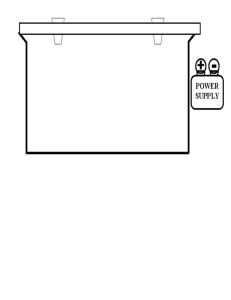Redox couples: Instruction Sheet
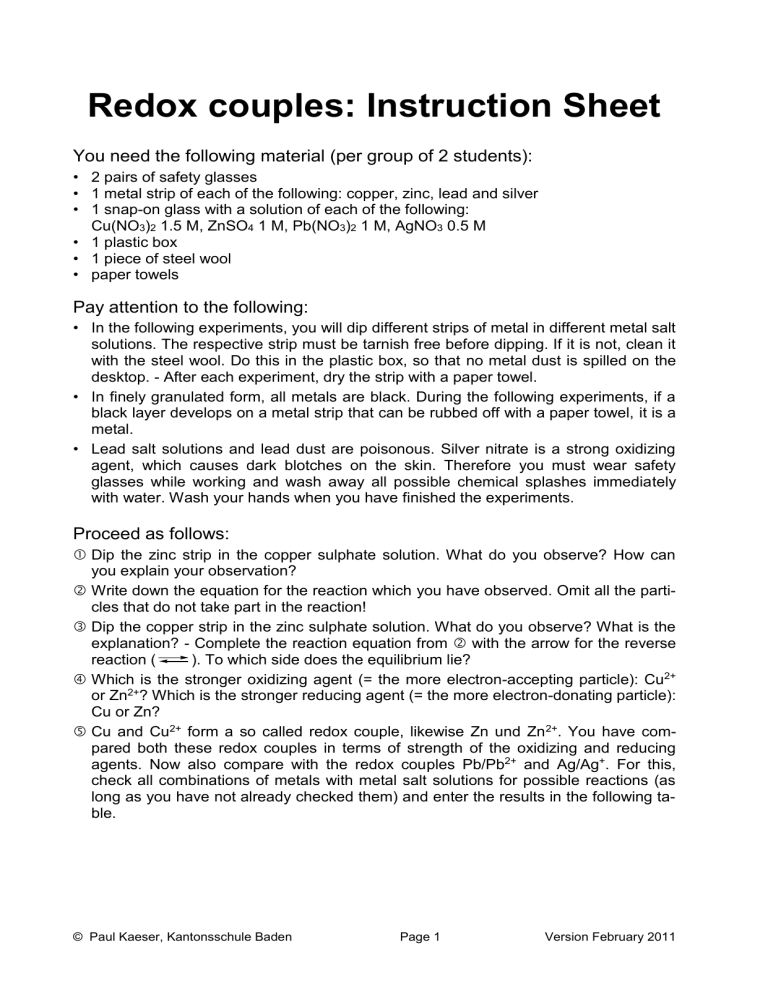
Redox couples: Instruction Sheet
You need the following material (per group of 2 students):
• 2 pairs of safety glasses
• 1 metal strip of each of the following: copper, zinc, lead and silver
• 1 snap-on glass with a solution of each of the following:
Cu(NO
3
)
2
1.5 M, ZnSO
4
1 M, Pb(NO
3
)
2
1 M, AgNO
3
0.5 M
• 1 plastic box
• 1 piece of steel wool
• paper towels
Pay attention to the following:
• In the following experiments, you will dip different strips of metal in different metal salt solutions. The respective strip must be tarnish free before dipping. If it is not, clean it with the steel wool. Do this in the plastic box, so that no metal dust is spilled on the desktop. - After each experiment, dry the strip with a paper towel.
• In finely granulated form, all metals are black. During the following experiments, if a black layer develops on a metal strip that can be rubbed off with a paper towel, it is a metal.
• Lead salt solutions and lead dust are poisonous. Silver nitrate is a strong oxidizing agent, which causes dark blotches on the skin. Therefore you must wear safety glasses while working and wash away all possible chemical splashes immediately with water. Wash your hands when you have finished the experiments.
Proceed as follows:
Dip the zinc strip in the copper sulphate solution. What do you observe? How can you explain your observation?
Write down the equation for the reaction which you have observed. Omit all the particles that do not take part in the reaction!
Dip the copper strip in the zinc sulphate solution. What do you observe? What is the explanation? - Complete the reaction equation from with the arrow for the reverse reaction ( ). To which side does the equilibrium lie?
Which is the stronger oxidizing agent (= the more electron-accepting particle): Cu 2+ or Zn 2+ ? Which is the stronger reducing agent (= the more electron-donating particle):
Cu or Zn?
Cu and Cu 2+ form a so called redox couple, likewise Zn und Zn 2+ . You have compared both these redox couples in terms of strength of the oxidizing and reducing agents. Now also compare with the redox couples Pb/Pb 2+ and Ag/Ag + . For this, check all combinations of metals with metal salt solutions for possible reactions (as long as you have not already checked them) and enter the results in the following table.
© Paul Kaeser, Kantonsschule Baden Page 1 Version February 2011
Zn 2+
Pb 2+
Cu 2+
Ag +
Zn Pb Cu Ag
Write down the 4 redox couples one below the other, putting them in order of increasing strength of the reducing agent. In each case, write the reducing agent on the left, with the appropriate oxidizing agent on the right. You obtain a so-called activity series.
Your teacher will provide you with an activity series which contains a greater number of redox couples. Look at the redox couples there that you already know.
Clean and dry the metal strips and the plastic box. Put away all materials where they belong.
© Paul Kaeser, Kantonsschule Baden Page 2 Version February 2011

